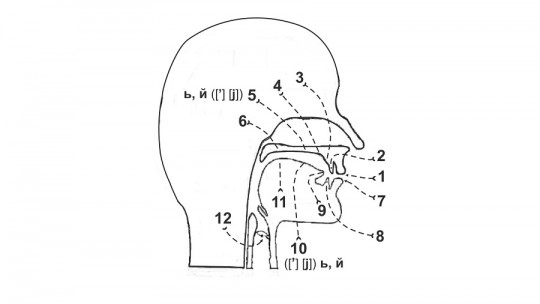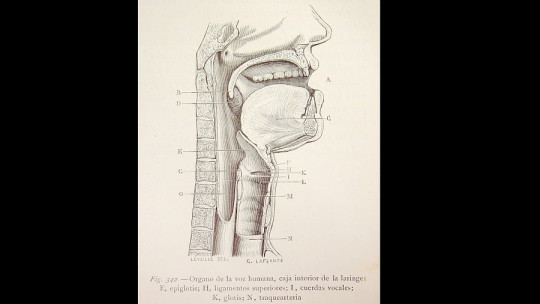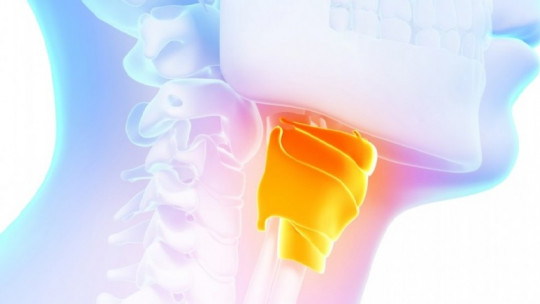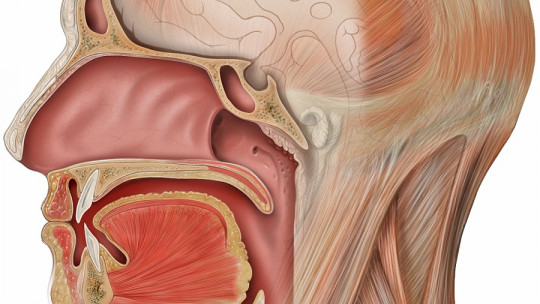The voice is one of the most useful instruments of the human being, being what allows us to use our main means of communication: oral language.
In addition to being something that is present in our daily lives, there are many people whose work depends on the voice, such as singers, teachers, telemarketers, tour guides… And therefore, when the voice is altered it is inevitable. that we realize and suffer a lot of discomfort.
Aphonia and dysphonia are two terms colloquially used as synonyms, used to describe when our voice fails. These are really two different concepts, with their peculiarities and, therefore, below we are going to discover the main differences between aphonia and dysphonia
Main differences between aphonia and dysphonia
The voice is a very present element in our lives, both daily and professionally. Human language has been evolving and becoming more sophisticated thanks to the fact that our species has a very complex speech apparatus capable of emitting hundreds of different phonemes, which is why the main means of communication that people use to transmit our ideas, emotions, thoughts and opinions is the oral modality of language.
If we had to give a list of all the professions where the voice is fundamental, it would not end. In one way or another, in all professions, and practically in any situation that we can think of, we need to speak, resort to oral language and, therefore, having a voice in good condition is essential, and much more so if we take into account its importance in professions such as singer, teleoperator, actor, teacher, tour guide or radio presenter.
Unfortunately, it is not unusual for our voice to fail us from time to time. Terms such as “aphonia”, “dysphonia” or “hoarseness” are common in general vocabulary, words that everyone knows and that attributes to them a meaning, often identical However, these three words are not synonymous, but although they refer to voice alterations, they refer to different degrees of inability to make sounds.
1. Differences in the severity of the problem
Let’s start with dysphonia. This word is composed of the prefix “dis” and the word “phonía”, both of Greek origin and which translate as “bad sound”. This refers to a qualitative and quantitative disorder of phonation, either due to organic or functional causes related to the larynx , in which the normal timbre of the voice is lost but the ability to make sounds is not lost. In dysphonia our voice is altered, but we can continue speaking.
Instead, aphonia (from “a” and “phonía”, “voiceless”) refers to the condition in which the voice is completely missing This means that, the many times we say that we are hoarse, we are not actually using the term correctly, since being hoarse, in its most literal sense, is not being able to make any sound. What we would really be in that situation is dysphonic, or having a hoarse voice.
2. Symptoms
Aphonia and dysphonia can be understood as two terms belonging to a continuum , aphonia being the most extreme situation of dysphonia, in which not only would the voice be affected but it would have been directly lost, this being the most striking difference. Apart from this, there are other differences in the form of common symptoms of one condition or another, which we will see below.
Symptoms of dysphonia
The quantitative and qualitative alteration of phonation brings with it a series of vocal characteristics or signs that differ depending on the type of dysphonia , depending on the organic or functional origin. The signs of these phonation disorders can manifest themselves in isolation or in combination with each other, and it is common for the symptoms, in the form of patient complaints, to coincide with the following signs:
Added to this, the patient usually indicates that he has non-phonatory symptoms:
Symptoms of hoarseness
In the case of aphonia, the two main symptoms are the most extreme hoarseness and the absolute inability to speak The same symptoms as in dysphonia do not occur, such as a trembling voice or loss of treble, because there is no voice at all. As for the non-phonatory symptoms, these are similar to those of dysphonia, being the following:

- Related article: “Why don’t we like the recorded sound of our voice?”
How does voice loss occur?
The progression from dysphonia to aphonia is gradual. We can consider that aphonia is the last step, the final station of a process of alteration and damage to the voice in which no precautions have been taken to avoid losing the voice, whether temporarily or permanently. The main reasons why you may experience voice loss are:
- Inflammation of the larynx and swelling of the vocal cords.
- Stomach acid reflux: these acids end up irritating the vocal cords.
- Viral infections such as colds can irritate and inflame the vocal cords.
- Hemorrhage in the vocal cords.
As we can see, the main phenomenon involved in aphonia and dysphonia is inflammation of the vocal cords , two flexible bands of muscle tissue found at the entrance to the trachea. The vocal cords are like any other muscle, that is, they need to be warmed and cared for so that they do not become injured. By overexerting themselves, they can be damaged and, if they are not properly treated or their injury is not remedied, the problem will end up getting worse.
Inflammation in the vocal cords means that the front part of them cannot vibrate, while the back part leaves a space that cannot close properly , causing air to escape without producing sound. The combination of these two problems means that intelligible sounds cannot be articulated, no matter how much the vocal cords are squeezed.
- You may be interested: “Stuttering (dysphemia): symptoms, types, causes and treatment”
Treatment and prevention
Dysphonia and hoarseness They are two degrees of the same problem: inflammation of the vocal cords For this reason, the solution is the same for both conditions, reducing inflammation of the cords, first letting them rest and, if necessary, resorting to pharmacology. It is essential not to strain your voice, since this can create a vicious circle in the inflamed cords, causing them to swell and become even more damaged. And, to prevent these two problems, you should avoid using too loud a voice or shouting often.
Contrary to what popular culture suggests, We should not speak in whispers when we are dysphonic and hoarse In fact, otorhinolaryngologists say that whispering is just the opposite of what should be done, since with this action what is done is to squeeze the vocal cords even more, aggravating the dysphonia and leading directly to hoarseness. What you should do is try to speak normally, with the voice that comes out to you or, directly, avoid saying anything, since the best treatment is complete rest.
Following a healthy lifestyle is an ally to avoid these two problems Foods with vitamin A such as dairy products, carrots, broccoli or spinach, help regenerate and repair tissues; while foods with vitamin E, such as walnuts and avocado, stimulate defenses, and it is essential to keep the throat well hydrated. And, of course, tobacco and alcoholic beverages should be avoided at all costs.
- Related article: “5 practical exercises to take care of your voice”
Could something more serious happen?
Normally, cases of dysphonia are resolved in a matter of days, however, if not, you should go to a doctor to evaluate the severity of the case. Most likely, this professional will prescribe painkillers to reduce throat discomfort, as well as rest
But sometimes what is behind aphonia and dysphonia can be much more serious, a medical condition that requires emergency pharmacological and surgical intervention and caused by something as dangerous as a tumor. It may also be due to some congenital malformation, such as alterations in the laryngeal membranes, angiomas, laryngeal papillomas…
In adulthood, dysphonia can be caused by neurological problems of the larynx, such as spastic dysphonia, which is characterized by voice spasms that prevent regular vocal flow, in Parkinson’s disease or myasthenia gravis. It can also occur due to endocrinological causes such as the myxedema of hypothyroidism or the changes produced in the climacteric.









